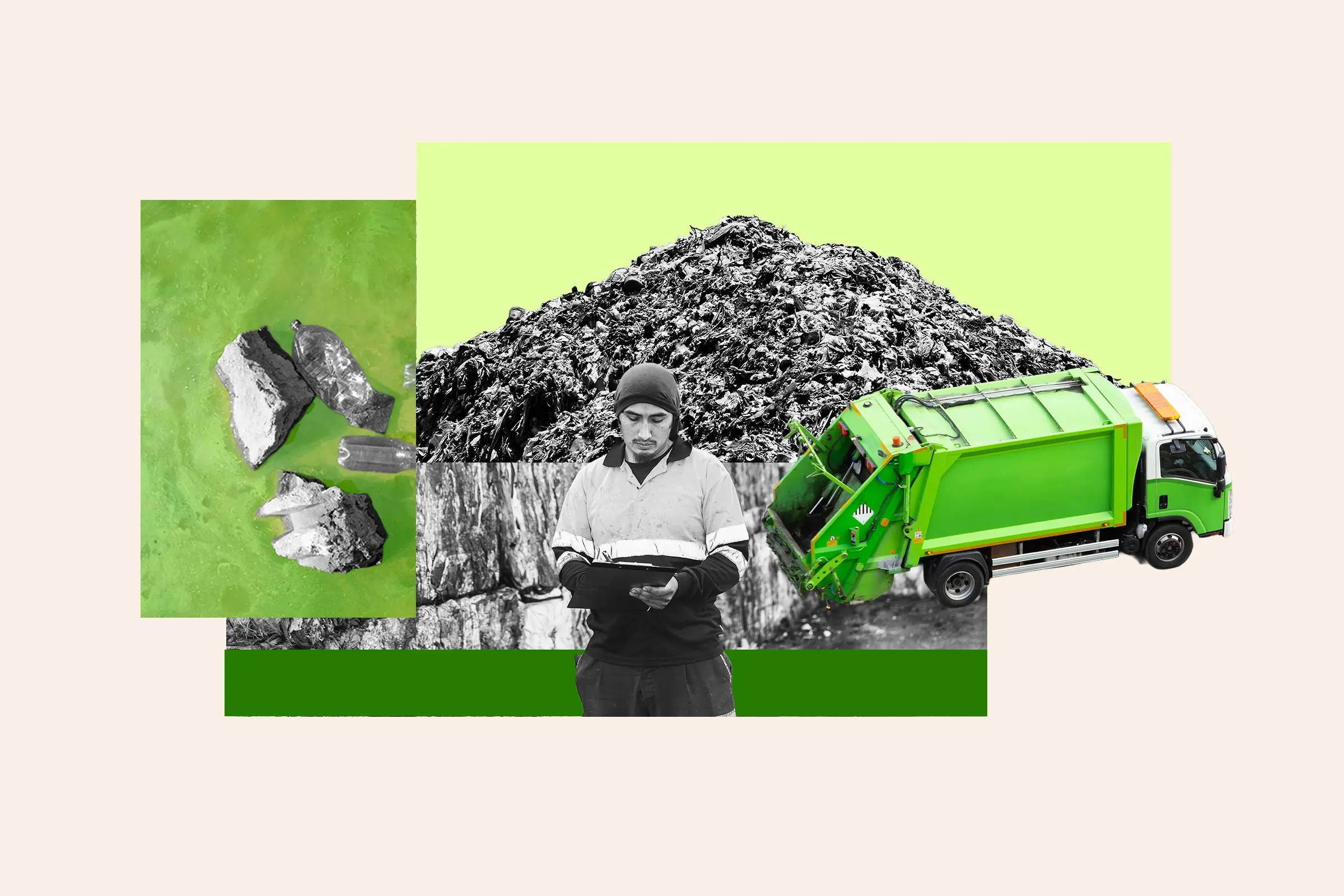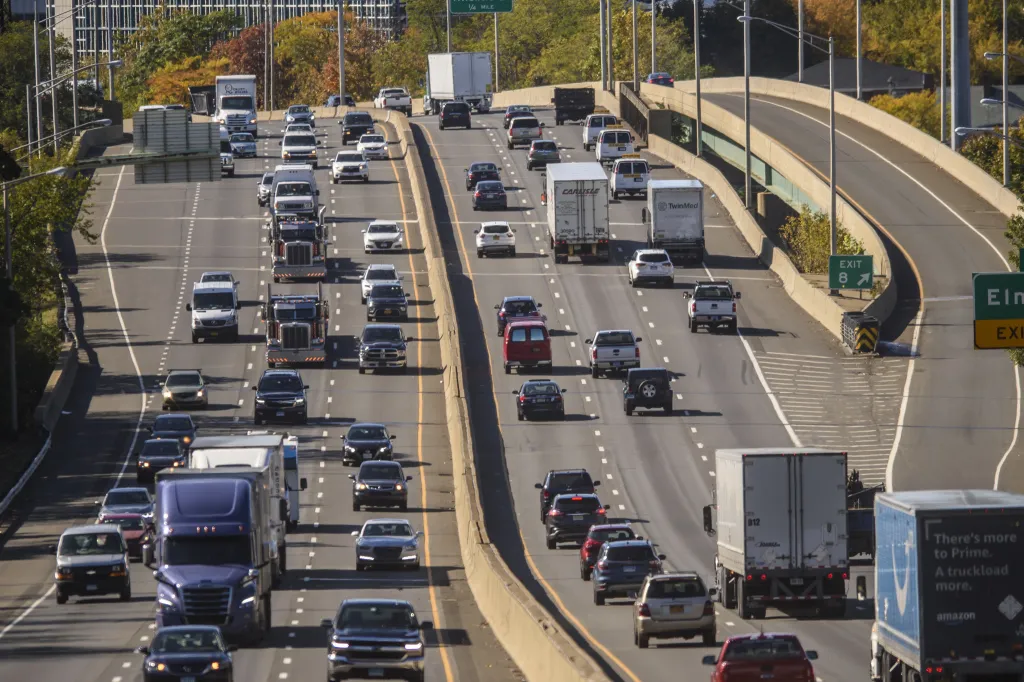
As plastic waste clogs rivers, kills marine life and threatens human health, many leaders of countries, communities and forward-looking companies are working on ways to stem the tide of plastic pollution.
After years of talks for a global treaty on plastic waste, the negotiations have bogged down with sessions this summer and late last year both ending in stalemate and frustration.
However, while international efforts sputter, a growing movement is gaining steam at the subnational level as U.S. states and Canadian provinces adopt Extended Producer Responsibility (EPR) programs to hold accountable the companies that put plastic packaging into the marketplace.
“For far too long, the burden and cost of waste management has been placed on local governments and consumers and citizens,” Nick Mallos, vice president of conservation, ocean plastics, for the environmental group Ocean Conservancy, said during a panel discussion at Newsweek’s Powering Ahead event last Thursday during Climate Week NYC.
An EPR changes that dynamic and “really flips it on its head,” Mallos said. “It makes producers of products and materials accountable to pay for the systems and the recovery of their materials.”
Seven states have adopted some form of EPR: California, Colorado, Maine, Maryland, Minnesota, Oregon and Washington. Each state program has its own approach, but all share some mechanism for payment by companies based on the type and amount of packaging materials they sell in that state. The funding goes toward improvements in waste collection, recycling and consumer outreach and education.
Over time, Mallos said, an EPR system will create an economic incentive to reduce waste, providing a nudge for businesses to move toward less problematic packaging.
“It really helps elevate those who are making durable, recyclable circular products,” Mallos said.
Sam Baker is executive director of Recycle BC, the first full EPR organization in North America. British Columbia launched its EPR in 2014 and provides recycling services to nearly all households in the province. Last year, the organization recycled more than 80 percent of packaging materials that entered the marketplace, including paper, cardboard, metal and glass. (British Columbia also has a return deposit program for drink containers that captures some of those bottles and cans, Baker explained.)
“Everybody’s in. If you’re putting packaging and paper into the province, you’re paying into the system,” Baker said. “That means that the system is much stronger as a whole, and when we provide a solution, we can provide a solution for all the types of packaging and paper.”
About 45 percent of plastic materials were collected last year and of those, more than 90 percent went to recycling, he said. For comparison, in the U.S., less than 10 percent of plastic waste is recycled, and about 75 percent of it heads to the landfill.
In 2000, the regional government for Vancouver, B.C., purchased land in anticipation of needing an expanded landfill. This year, however, the government sold that plot of land because the landfill will no longer be needed.
With more than a decade of experience with EPR programs, Recycle BC has become the model for other provinces and states developing or considering their own programs, and Baker shared some observations about how EPRs have developed and what might be coming as the idea is more widely applied.
Baker said the EPR has allowed the province to look at waste at a system-wide level, allowing it to make smarter decisions about investments in waste collection. Recycle BC has a tiered fee system that charges more for packaging types that are more difficult to recycle. This system, also known as an eco-modulated fee, is also being included in California, Colorado and Oregon to incentivize recyclable or less toxic packaging, according to the Circular Action Alliance.
By itself, Baker said, British Columbia did not have the purchasing power to send a strong market signal to industry. Now, with most of Canada and U.S. states implementing EPRs—including California, the world’s fourth largest economy—companies that produce plastic packaging are paying more attention.
“Now they’re really thinking, how do we reduce our costs?” Baker said. “We’ve been doing as much work, I would say, upstream with producers and organizations trying to streamline and get some standardization as we have downstream to refine our collection system.”
Household goods company SC Johnson is among the companies working with state governments to develop EPR programs, and the company has taken a leadership role in the corporate world, advocating for policies to address plastic waste.
“Regulation is inevitable in my view, it’s just a question of when,” SC Johnson CEO Fisk Johnson told Newsweek. Johnson said he sees the rapid adoption of state EPRs building momentum for federal legislation as each state program uses different definitions and different rules.
“Trying to comply with different state laws from labeling or product design rules, it gets very complicated. That’s going to drive up cost,” Johnson said. “The cheaper solution is to have federal EPR regulation.”
Johnson said that while the political environment in Washington is not promising for any legislation at the moment, he remains optimistic about the chances for an EPR bill that might emerge in the coming couple of years. That’s largely because of the desire he sees among consumers who are eager for action on plastic waste.
“A large majority of consumers are already seeing plastic as a big human and planetary health issue,” Johnson said. “And I think people are going to be looking at products and companies that are solving this issue [rather] than, just kind of dragging their feet.”



